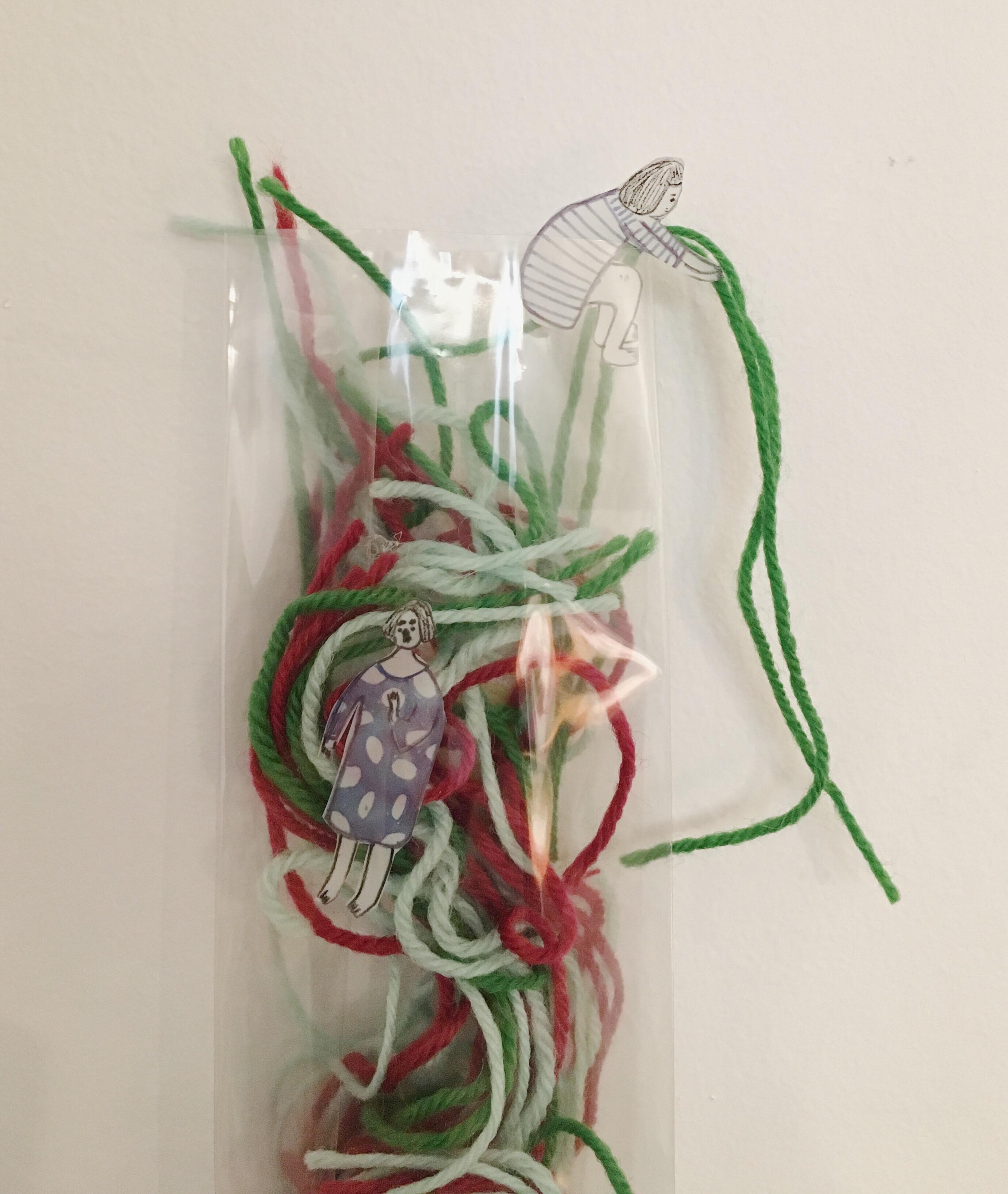Introducing two artists from the first annual VAVxCUCCR residency
In celebration of the Concordia University Centre for Creative Reuse (CUCCR)’s first year of operation, the centre will host their first annual residency in collaboration with the VAV Gallery. Together, the VAV and CUCCR have selected seven undergraduate fine art student-artists who will be featured in an exhibition on March 22. The artists have been tasked with creating zero-waste artworks using CUCCR’s materials.
The Concordian will profile the artists-in-residence each week leading up to the birthday event. Last week’s issue featured Bianca Arroyo-Kreimes’ animation, Ballad for the Spirits, and Gabrielle Desrosiers’ sunset studies.
***
Roxane Fiore has a DEC in graphic design from Ahuntsic College, and is now in her last year of painting and drawing at Concordia. She works primarily in drawing, but relies heavily on collage for inspiration and compositional components. Collage allows her to create new perspectives by enabling her to “access things that are beyond what I can invent,” Fiore explained.
Photo courtesy of Roxane Fiore.
While searching for images, Fiore looks for textures, colours and unrecognizable shapes among figurative imagery. She flips through magazines, tearing out and cutting up pieces that intrigue her. Then, she scans all she has collected in order to work with the images digitally.
“I have a large digital collection of random pieces that I can use and gather together, and there is a lot of chance happening in my work,” the artist revealed.
Fiore enjoys the element of surprise that comes with juxtaposing random images with each other. Once satisfied with the juxtaposition, the artist will add, remove and play with different features until she creates something balanced that catches her eye.
Sometimes, Fiore will take the individual collage pieces and make a manual assemblage to photograph. That process allows her to obtain shadows and create an interesting “trompe-l’oeil,” or illusion.
Usually Fiore creates large works, but for the CUCCR residency, she has adapted her process. “This time around, I was scanning through the material found at CUCCR with an idea of the type of imagery I was looking for,” Fiore said.
This project, titled Places I Have Never Been to; Things I Have Never Seen, is a series of small, square drawings measuring 7.5 inches, drawn in pastel and charcoal. “Their small size invites the viewer to search for details and experience the world through my eyes,” she said. This series illustrates her perception of the world. She is in a constant search for form, shapes, texture and colour. The pieces also exemplify how she crops images in her mind, focusing on the beauty within the everyday and the mundane.
***
Saba Heravi was born in Iran and moved to Canada five years ago to continue her studies in architecture. Heravi has a bachelor’s degree in architecture from the Azad University of Mashhad in Iran, and received her master’s in architecture here at Concordia. However, she always wanted to study fine arts and become a “career artist.” Heravi is currently finishing her third year in studio arts at Concordia, with a major in drawing.
Her work revolves around the ideas of home, identity and memory. As an immigrant, the collision of cultures and identity is the artist’s daily reality. Heravi’s work approaches this broad subject in fragments, so she can make sense of what is going on.
“I try to tell intimate stories by utilizing objects, stories and photographs,” Heravi explained. “In my work, objects and belongings become as important as the subject to expose the narrative. They are an integral part of my narrative.”
Recently, she has been working on drawings of little worlds. The population of these worlds consist of women and young girls, all representative of herself. The artist’s characters are calmly engaged in strange activities and poses in relation to their surroundings. For example, some may be doing yoga, and some may be dropping or breaking things on purpose.
Initially, Heravi planned to use drawing as the main medium for the residency project. However, after exploring CUCCR’s depot, she realized drawing alone wouldn’t convey the message she was aiming for. “I decided to mainly use objects from CUCCR, and drawing as a secondary tool. This way, CUCCR’s recycled material would play the leading role in my project,” Heravi said.
The artist used a lot of stationary materials, fabric and string to accompany her drawings, as well as some hardware, like screws and bolts, to assist with the installation process.
“The objects vary, which I think is whats makes this projects challenging. You don’t necessarily find the objects you had in mind, and you will end up using something you had never thought of,” Heravi explained. At CUCCR, this very moment Heravi describes is referred to as “CUCCR magic.”
Mark your calendars for CUCCR’s birthday at the VAV Gallery on March 22 at 6 p.m. Stay tuned for next week’s profiles of student-artists Gabrielle Mulholland, Laura Douglas and Mikaela Kautzky.
Feature photo courtesy of Saba Heravi
